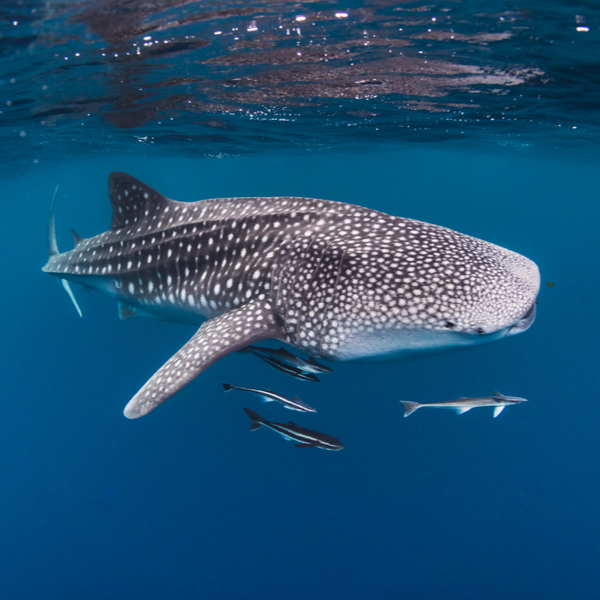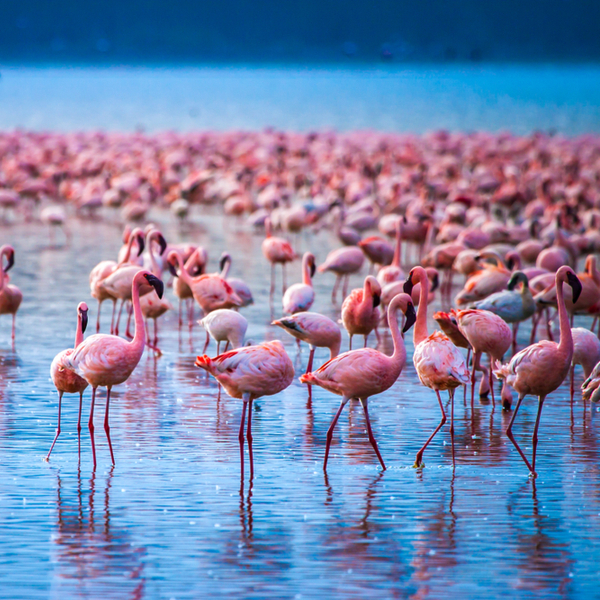A Kenya safari is right up there on everyone’s travel must do list. But with the Big 5 prowling the savannahs, dry and rainy seasons to navigate and over 40 national parks to choose from, booking it can be a bit bewildering. Which is where we come in. Sharing our intel on what to expect, where and when to safari and a few options you might not have though of, we’re making booking your Kenya safari holidays that little bit easier…
What to expect
Kenya safari holidays vary massively. Budget plays a part, but so does your appetite for adventure. By and large, game drives are the go-to for most safari newbies taking their first 4×4 across the Masai Mara. You’ll likely be scouting for the Big 5 – lions, leopards, elephants, cape buffalo and rhinos, depending on where you’re staying and what’s known to be nearby. There’s always the option to get specific, by booking tours to see certain animals. Though, do keep in mind there’s much more than the Big 5 out there. Kenya’s wildlife can be seen up close in sanctuaries, but the best experiences are always the wild spots where you never quite know what might happen. If you’ve got a boutique kind of budget, a stay at Giraffe Manor guarantees a one-of-a-kind experience, with an ethical side.

Hiring a specialist guide might get you close enough to your chosen animal for some unique photography. Or you can go back to basics and track animals under the expert tuition of a Maasai warrior. There’s one unifying aspect to almost every safari package: the daily sundowner. Unless, of course, you’re off on a night safari…
Where to go
Do a little digging into interesting facts about Kenya and you’ll find a staggering number of national parks and game reserves. They’re all options for a safari – and some come with different species of animal to spot. Where you choose will obviously depend on the kind of safari you’re in the market for, but we’ve rustled up a few of the best ones for inspo.
Maasai Mara
The original and the best. Yes, it’s the obvious choice. But, there’s a reason so many people choose it for their Kenya safari. It all comes down to the wildlife diversity. The 90+ mammal species is impressive enough, but factor in the bird numbers and you’re looking at over 650 different animals to spot. The habitat isn’t that diverse – you’re mainly looking at open grassland. It’s not all acacias, sycamores and arid plains though. The Mara River hides hippos and crocodiles and provides a home for otters. As well as the Big 5, expect to see hyenas, impalas, bat-eared foxes, topi, secretary birds, honey badgers and much, much more.


Watamu Marine National Park
Bit of a curveball this one, but to tick off as many animals as possible while you’re in Kenya, consider pairing your Maasai Mara safari with a week on the coast. More specifically, spend time at Kenya’s Watamu Marine National Park. If the coastal coral gardens don’t woo you, the chance to swim with turtles, dolphins, manatees and black-tipped reef sharks just might. Then there’s the added whale shark, humpback whale and black kite sightings to consider. Around 150 corals have set up home here, providing a habitat to 600 different marine species. Overhead, there’s around 100 species of bird to spot, including the small and colourful African pygmy kingfisher. On the shoreline? The wildlife watching continues. The most impressive? It has to be the sizeable, and fearsome, giant monitor lizards.
Orbzii tip: Looking for even more things to do in Kenya, beyond the pristine sands of Watamu? Don’t miss the chance to scope out the nearby Gedi Ruins. Just a 15 minute drive from the sands, they still have archaeologists doing a bit of head scratching as to why the inhabitants gave up such a prized spot.
Sibiloi National Park
If this isn’t your first safari, consider spending some time in Sibiloi National Park to tick off some of Kenya’s rarer, endemic species. Grevy’s zebras, the Gerenuk and Beisa oryx can be spotted in the park, which is also a hotspot for fossils and archaeological finds. Though, your eyes are more likely to be on the nearby shores of Lake Turkana, home to over 10,000 crocodiles. Sibiloi’s geography makes for a nice change too. The UNESCO World Heritage site comes with roses, woodland and euphorbia – providing food and habitat for yet more animals. If it’s the fossil intel that’s brought you here, do swing by the Koobi Fora Museum. There’s a 3 million year old tortoise shell to study – and the chance to learn about the ancient human remains that have been found here over the years.

Kenya safari options
If you picture your Kenya safari relying heavily on a sturdy 4×4 vehicle – and potentially some travel sickness tablets, think again. There are many different ways to navigate the Masai Mara for your Kenya safari holiday. Here’s just a few…
Hot Air Balloon Safari
Not keen on zipping around by jeep? Take to the skies instead. Hot air balloon safaris soar over the skies of the Amboseli National Park – and the Masai Mara, when conditions are right. You’ll get to see the epic scale of the grasslands, and the herds of zebra, wildebeest or gazelle below. Tours are usually small in number – there’s only so many people you can fit in a basket, and leave at dawn to catch the sunrise over the savannah.


Walking Safari
To get a smidge closer to the action, there’s always the option of a walking safari. Though, some might consider this getting a little TOO close. Again, you’ll need to be up early, as the tours usually start before the sun gets too overwhelming. For anyone who’s not an early riser, there’s always the option to join the early evening walks. Often led by an experienced Maasai Mara tribe member, you’ll get the chance to do some real tracking and learn a few tips from the pros.
Boat safari
Take to the water to get closer than you’d potentially like to hippos and crocodiles. On Lake Nakuru, naturalists hop aboard to help you figure out your flamingoes from your crowned cranes. And who could say no to an onboard sundowner on the later lake tours? A little more refined than bobbling around on the back of a jeep – and still gives you chance to see the Big 5 from the waters.

When to go
The best time to go on safari in Kenya is during the dry seasons. And this has far more to do with the wildlife than any rain splashes on your expedition gear. When the rains dry up, you’re more likely to see higher numbers of animals gathered around the watering holes dotted across the grasslands. At the same time, those precious water sources become the setting for the dramas we see play out on those Attenborough docs we love so much. When both antelopes and lions share a drinking spot, it’s only a matter of time until there’s some stalking and preying action. Add in the HUGE annual wildebeest migration – which also lands during a dry season and you’ve got yourself one hell of a safari show.

By now you’ll be itching to press the book button on peak season. Which, to catch everything in full Masai Mara gloriousness, is during August. Dry season is in, the wildebeest are migrating in their millions and there’s a few zebra and eland along for the ride. But, tourist numbers are, understandably high. If you’re a little more laidback about your timings, you can still snag a front row seat at the migration.
Book nearer the end of dry season, in September October, and you’ll still catch a few wildebeest making their way clockwise around their migration path. Or, if you’d rather the skip the migration altogether, look at the other dry season – January through to March.



















